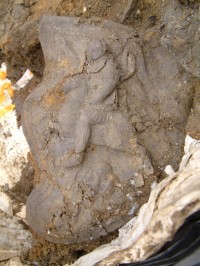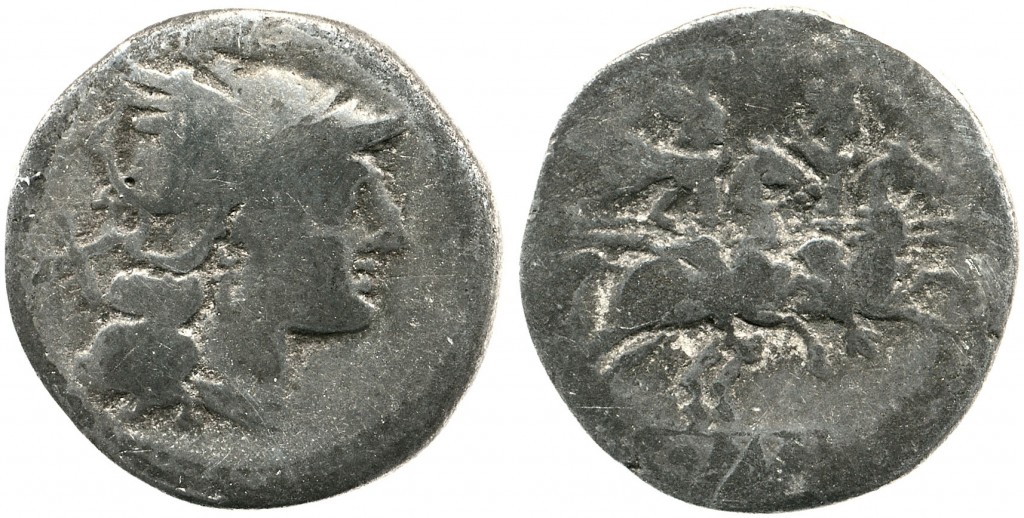 The silver denarius was found by a metal detectorist ten years ago in Hallaton, Leicestershire, but it was just one of 5,000 coins in a hoard that included a rare Roman cavalry parade helmet, a decorated silver bowl and the remains of over 300 pigs probably consumed during a ritual feast, so it has taken a decade to date it.
The silver denarius was found by a metal detectorist ten years ago in Hallaton, Leicestershire, but it was just one of 5,000 coins in a hoard that included a rare Roman cavalry parade helmet, a decorated silver bowl and the remains of over 300 pigs probably consumed during a ritual feast, so it has taken a decade to date it.
The Leicestershire County Council bought the Hallaton hoard and created a special gallery for it at the Harborough Museum in Market Harborough. The coins have been in storage since they were brought to the museum while museum researchers carefully dated and catalogued them. The somewhat worn silver coin dates to 211 B.C., that’s 4 years older than the previous record-holder.
The Hallaton Treasure is the greatest number of Iron Age coins ever found in Britain. Archaeologists think the site was a shrine built by the Corieltavi tribe, but they don’t know how such an ancient coin came to be in their possession. Most of the 5,000 coins date to the mid first century A.D., around the time of the Roman invasion.
Some archaeologists have however speculated that such Roman Republican coins found their way into Britain before the Roman conquest in 43 AD and were evidence of exchange through trade or diplomacy.
Professor David Mattingly of the University of Leicester’s School of Archaeology and Ancient History said: “This hoard has changed our view of just how significant the East Midlands were in this period and this coin is a good example.
“It indicates there was contact between this region and the Roman Empire despite the distance between the East Midlands and the parts of Britain the Romans arrived in, like Colchester and Chichester.”
He added: “It was minted in Rome at the time of the Hannibalic wars and here it is turning up after what must have been quite a long journey.”

The silver denarius would have been a day’s wages for a soldier or an unskilled worker. It features a helmeted goddess — possibly Roma — on one side, and the twins Castor and Pollux riding galloping horses on the other. The wear suggests it passed through a great many hands in its long lifetime before it went to ground in the 1st c. A.D.
The coin has a place of honor in the Hallaton Hoard display at the Harborough Museum, and is scheduled to go on tour within the UK this year.